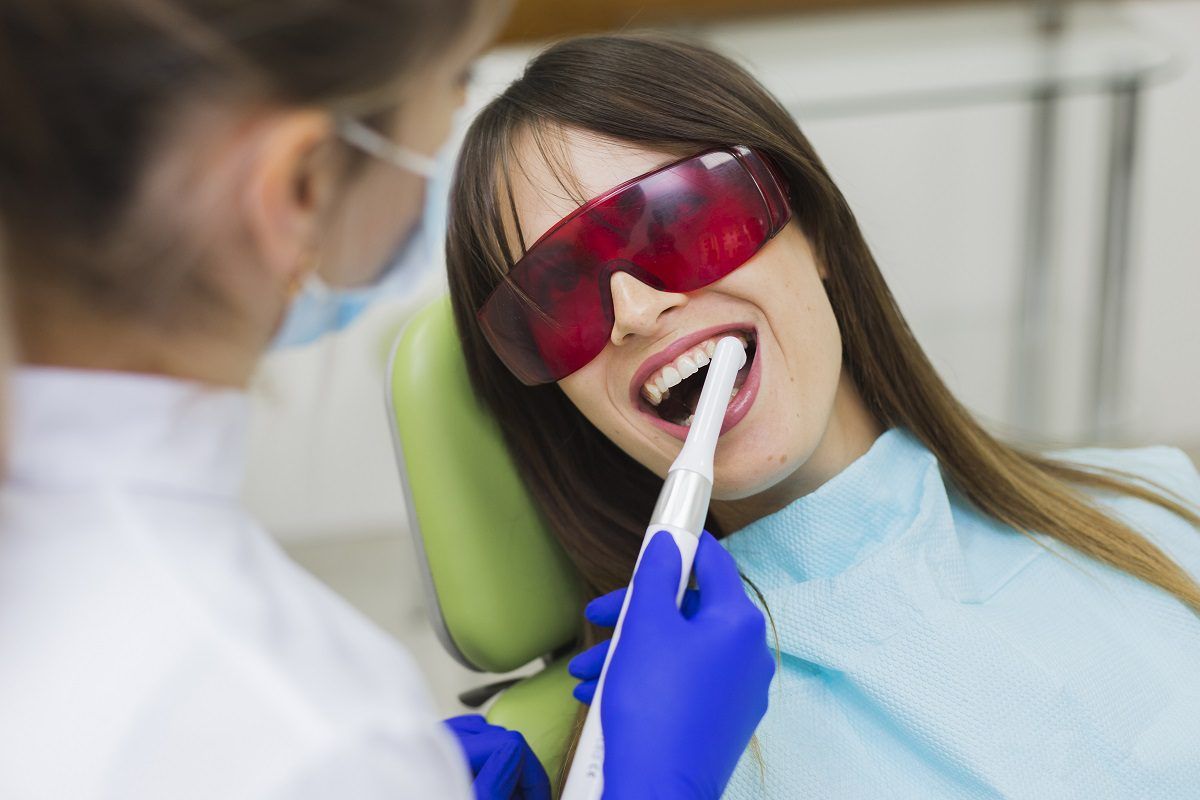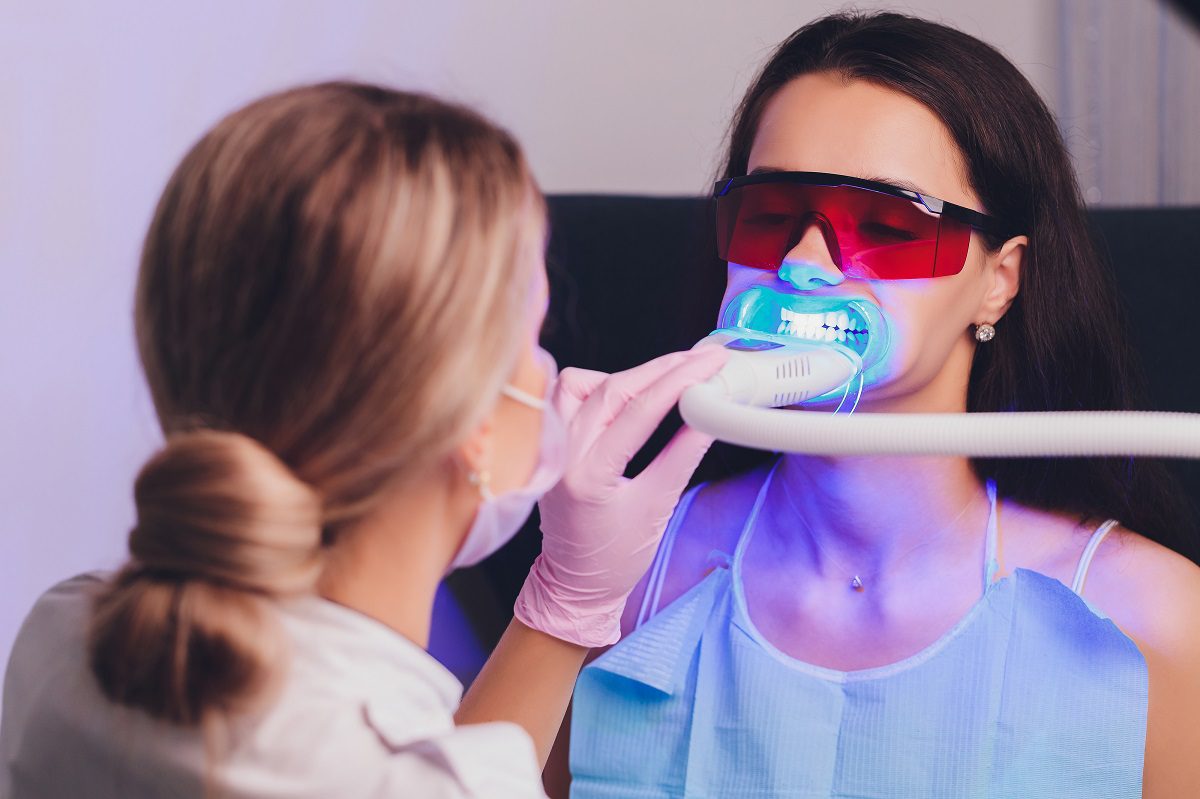Introduction to Teeth Bleaching: What is it and How it Work?
It’s no wonder that teeth bleaching has become a sought-after solution for achieving a brighter, whiter smile. This cosmetic dental procedure has gain...

It’s no wonder that teeth bleaching has become a sought-after solution for achieving a brighter, whiter smile. This cosmetic dental procedure has gained popularity for its ability to transform stained or discolored teeth into pearly whites that radiate confidence.
Whether it’s the result of aging, consumption of staining substances like coffee or tobacco, or genetics, tooth discoloration can dampen one’s self-esteem.
However, with the introduction to teeth-bleaching techniques, a radiant smile is now within reach for many. Behind the magic of this transformative treatment lies the science of dentistry. At its core, teeth bleaching utilizes the power of bleaching agents to break down and remove stains from the enamel, revealing a brighter shade of white.
A range of choices is available, from in-office professional treatments performed by dentists to at-home whitening kits. Each method employs different concentrations of bleaching agents, application techniques, and treatment durations, offering flexibility and convenience to those seeking a radiant smile.
While teeth bleaching can provide remarkable results, it is essential to approach the procedure with caution. Consulting with a dental professional before embarking on teeth whitening is necessary. A thorough examination of oral health, identification of the underlying causes of tooth discoloration, and personalized treatment plans can ensure optimal results and minimize potential risks.
In this article, we will explore the basics of teeth bleaching and the way it works. Get ready to unlock the secrets of a whiter smile and discover the transformative power of teeth bleaching.
“A survey reveals that 77% of women and 65% of men have sought teeth whitening treatment at some point”.
Understanding Teeth Bleaching: A Brighter Smile Awaits
Teeth bleaching has gained significant popularity as individuals strive for a brighter, more confident smile. Understanding the basics of teeth bleaching can help you decide whether it’s the right option for you.
It involves using chemical agents to break down and remove stains or discoloration on the surface of the teeth. The key contributors to tooth discoloration include the consumption of staining substances like coffee, tea, or tobacco and the natural aging process. Bleaching can effectively minimize these stains, resulting in a whiter and more appealing smile.

The teeth bleaching process involves using bleaching agents, typically hydrogen peroxide or carbamide peroxide, to eliminate stains from the tooth surface and underlying enamel. Here is a detailed explanation of the complete process:
- Oral Examination: The dental professional will start with a comprehensive oral examination. He will assess the overall health of your teeth and gums, checking for any dental issues that may need attention before proceeding with teeth bleaching. This examination ensures that your oral health is suitable for the procedure.
- Shade Assessment: The dentist may take initial photographs or use shade guides to determine the current color of your teeth. This step helps establish a baseline for comparison after the bleaching process.
- Protective Measures: Before applying the bleaching agent, the dental professional takes precautions to safeguard your gums and oral tissues. It may involve using a protective gel or rubber shield to isolate the teeth before treatment.
- Application of Bleaching Agent: The dentist will then apply the bleaching agent to the teeth. The professional in-office treatment uses a higher concentration of the bleaching agent than at-home kits. The agent is carefully applied to the tooth surfaces, ensuring complete coverage.
- Activation (Optional): The bleaching agent may sometimes be activated using a particular light or laser. This step is often performed in-office and can help accelerate the bleaching process.
- Waiting Period: Once the bleaching agent is applied, you will typically have to wait for a specified duration to allow the agent to work on the teeth. The time may vary depending on the bleaching agent used and the desired level of whitening.
- Rinse and Evaluation: After the waiting period, the dentist will thoroughly rinse the bleaching agent from your teeth. He will then evaluate the results and compare the post-treatment tooth shade with the earlier baseline shade.
- Additional Sessions (if necessary): Multiple sessions may be required depending on the desired level of whitening and the initial tooth shade. The dentist will discuss the treatment plan and determine the need for additional sessions based on your goals.
- Post-Treatment Care: After bleaching, the dentist may provide instructions for post-treatment care. It may include avoiding certain foods and beverages that can stain the teeth and maintaining good oral hygiene practices.
Is Teeth Whitening and Teeth Bleaching the Same Thing?
Teeth whitening and teeth bleaching are related procedures aimed at improving the color and appearance of teeth. While the terms often appear similar, there is a slight distinction between the two:

- Teeth Whitening: Teeth whitening refers to any process that lightens the color of teeth, either by removing surface stains or altering the underlying tooth color. It encompasses both intrinsic and extrinsic tooth discoloration. Whitening methods may involve techniques and products, including whitening toothpaste, mouthwashes, and over-the-counter whitening strips.
- Teeth Bleaching: It employs bleaching agents that penetrate the enamel and dentin to break down the molecules responsible for tooth stains, resulting in lighter tooth color. Teeth bleaching can be performed professionally in a dental office or using at-home whitening kits under dental supervision.
Fast Facts on Teeth Bleaching
- Teeth bleaching is a cosmetic dental procedure to lighten the tooth enamel’s color.
- Bleaching agents in procedures effectively break down and eliminate stains from the enamel, resulting in a brighter appearance.
- It utilizes in-office professional treatments or at-home whitening kits to achieve a brighter smile, offering different concentrations of bleaching agents and application techniques.
- In-office teeth bleaching treatments are typically faster and may provide more immediate results, often completed in a single dental visit.
- In at-home whitening kits, individuals typically apply custom-fitted trays or strips containing bleaching agents for a specified duration over days or weeks.
- It's generally safe when performed under the guidance of a dental professional.
- The results of teeth bleaching can vary depending on the individual’s initial tooth color, the severity of discoloration, and the chosen bleaching method.
- It's not a permanent solution, as the effects may fade.
- Maintaining good oral hygiene practices is essential to prolong the effects of teeth bleaching and carry a bright smile.
The Science Behind Teeth Bleaching: How It Works?
The science behind this cosmetic dental procedure is fascinating. Teeth-bleaching agents, typically hydrogen peroxide or carbamide peroxide, penetrate the tooth’s enamel and break down the chemical bonds that create stains. The use of an activating light or heat source often accelerates this process.
The process of teeth bleaching typically involves the following steps:
- Bleaching Agents: Teeth bleaching utilizes bleaching agents, typically hydrogen peroxide or carbamide peroxide. These agents can break down and eliminate the molecules responsible for tooth stains.
- Penetration: The bleaching agents penetrate the tooth enamel and reach the underlying dentin, the layer beneath the enamel. Dentin is naturally a yellowish color and contributes to the overall tooth color.
- Chemical Reaction: Once the bleaching agents reach the dentin, they initiate a chemical reaction. This reaction breaks down the chromogens, organic compounds responsible for tooth discoloration. By breaking down the chromogens, the bleaching agents help remove the stains and discoloration, resulting in a whiter appearance.
- Oxygen Release: The bleaching agents release oxygen molecules during the chemical reaction. These oxygen molecules act as oxidizing agents, which further contribute to the breakdown of the chromogens. The oxygen molecules help to lighten the color of the teeth by altering the chemical structure of the stains.
- Diffusion: As the chemical reaction progresses and the stains break down, the bleaching agents penetrate deeper into the tooth structure. It allows them to target and remove stains embedded within the tooth.
- Whitening Effects: The cumulative effect of the penetration, chemical reaction, oxygen release, and diffusion is a gradual lightening of the tooth color. As the bleaching agents penetrate the tooth structure, they gradually lift and remove stains, making teeth brighter and whiter.
Thoughts
Whether you opt for at-home kits or professional treatments, the science behind teeth bleaching offers promising results for many individuals.
It’s important to remember that the effectiveness of teeth bleaching may vary depending on the severity of discoloration and individual factors. Consulting with a dental professional is always advisable to determine the most suitable method for your needs.
Contact your dentist in Walnut Creek, Dr. Tiziana Procopio Towle, DDS, at Procopio Dental Office today to learn about Introduction to Teeth Bleaching: What is it and How it Work.
Resource:
Who Is Eligible For Teeth Whitening?
*This media/content or any other on this website does not prescribe, recommend, or prevent any treatment or procedure. Therefore, we highly recommend that you get the advice of a qualified dentist or other medical practitioners regarding your specific dental condition*
Get to know us
The best and gentle Dentists and Team Member of Procopio Towle Dental Office are dedicated to providing top quality dental care to patients in Walnut Creek the surrounding San Francisco Bay Area.
Meet Our Dentist



